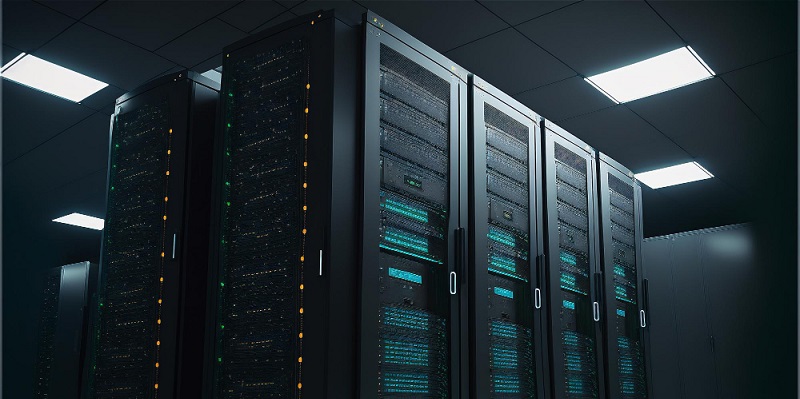One of the world’s most powerful supercomputers, known as Jupiter, is set to revolutionize the field of high-performance computing in Europe. But what sets this machine apart from others on the Top 500 list is its utilization of ARM cores instead of conventional x86 parts. With the capability to perform calculations at one exaflop or higher, Jupiter represents a significant leap in processing power. Let’s delve deeper into the features and implications of this cutting-edge system.
Distinction: ARM cores vs. x86 parts
Traditionally, supercomputers have relied on x86 parts, which have been the industry standard for decades. However, the Jupiter system will diverge from this norm by embracing ARM cores. This deviation is noteworthy because ARM processors are primarily associated with mobile devices like smartphones and tablets. By incorporating ARM cores, Jupiter aims to harness the advantages of reduced power consumption and improved efficiency that the ARM architecture offers.
Definition: Exascale Supercomputers
To fully appreciate the significance of Jupiter, it is essential to grasp the concept of exascale computing. Exascale supercomputers, such as Jupiter, are capable of executing calculations at a staggering rate of one exaflop or more, equating to a quintillion floating-point operations per second. This unprecedented level of processing power holds immense potential in various fields, including scientific research, weather forecasting, drug discovery, and simulations.
Collaboration with EuroHPC JU, Evident, and ParTec
Assembling a supercomputer of Jupiter’s magnitude requires a substantial collaborative effort. The European High-Performance Computing Joint Undertaking (EuroHPC JU) spearheads the project, joining forces with computing firms Eviden and ParTec. This collaboration ensures the integration of cutting-edge technology and expertise from multiple sources, enabling the realization of Jupiter’s immense computational power.
Processor Choice: SiPearl’s Rhea Processor
EuroHPC has opted to utilize SiPearl’s Rhea processor, which is based on ARM architecture, as the heart of the Jupiter supercomputer. Rhea boasts 72 cores, each designed with ARM’s Neoverse V1 CPU, specifically tailored for high-performance computing (HPC) applications. This choice aligns with EuroHPC’s vision of energy-efficient computing that can tackle complex computational challenges.
Rhea Processor Features: Neoverse V1 Architecture
The Neoverse V1 architecture is a breakthrough in ARM’s development for HPC applications. With 72 cores packed into the Rhea processor, it offers a remarkable balance between performance and power efficiency. The Neoverse V1 CPUs optimize memory bandwidth, enhance floating-point computation capabilities, and incorporate features essential for supercomputers, such as advanced vectorization and cache management. This architectural design ensures that Jupiter’s processing power remains at the forefront of high-performance computing.
Nvidia’s involvement with Jupiter
Among the key beneficiaries of the Jupiter project is Nvidia, a renowned name in the world of graphics processing units (GPUs). Nvidia’s Booster Module, equipped with powerful GPUs and Mellanox ultra-high bandwidth interconnects, will enhance Jupiter’s computational capabilities even further. The inclusion of Nvidia’s expertise ensures that Jupiter can handle demanding workloads and complex simulations, cementing its position as a leading contender in the supercomputing arena.
Supercomputer ranking and prominence
Once completed, Jupiter is expected to elevate its position to the upper echelons of the supercomputer rankings. With its exascale capabilities and reliance on cutting-edge technology, Jupiter will compete with renowned systems like Frontier. As the current leader, Frontier, located at Oak Ridge National Laboratory in the US, achieves an impressive 1.1 exaflops using AMD processors. However, Jupiter’s use of ARM cores may provide a competitive advantage in terms of power efficiency and scalability.
Europe’s Jupiter supercomputer, powered by ARM cores, represents a significant milestone in the realm of high-performance computing. With its exascale capabilities, thanks to SiPearl’s Rhea processor and Nvidia’s Booster Module, Jupiter pushes the boundaries of computational power for a wide range of applications. This groundbreaking project, driven by EuroHPC JU, Eviden, and ParTec, showcases Europe’s commitment to advancing scientific research, innovation, and technological excellence. As Jupiter takes its place among the world’s most powerful supercomputers, the potential for transformative discoveries and breakthroughs in various fields expands exponentially.

